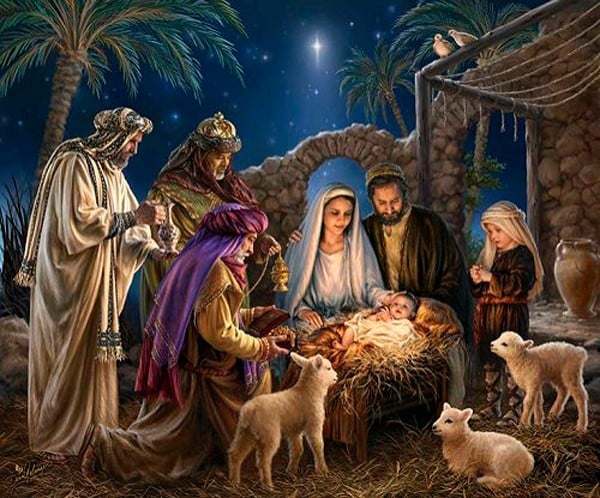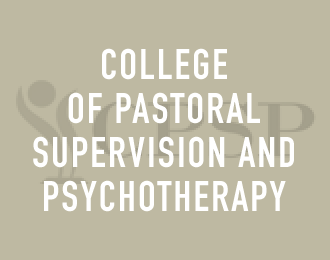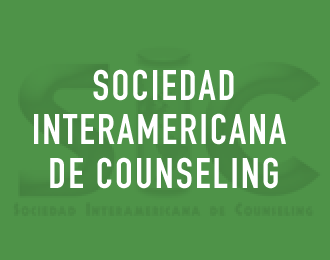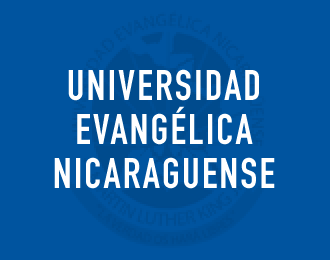The origin of Christmas and Christianity
Esteban Montilla | 20 diciembre, 2024

Introduction
Christmas has transcended religion by becoming a social opportunity that brings together family and close friends to cook, eat, sing, share experiences, and exchange gifts. This holiday dates to the beginning of 300 A.D., when Christian leaders decided to emphasize the birth of Jesus of Nazareth for theological and contextual reasons.
These Christian theologians wanted to affirm that the person who inspired this new religion called Christianity was an honest and historical human being. In addition, they took the opportunity to connect the birth of Jesus of Nazareth with the celebration of several well-known festivals in that region.
The Romans celebrated the Saturnales, a feast that lasted seven days starting on December 17. There was plenty of fresh meat because the farmers slaughtered animals in preparation for winter, and so there was an abundance of food that the members of the aristocracy shared with the rest of the people. In addition, there were various entertainment shows and gift exchanges.
Another popular celebration at that time was the Feast of Mithras, which in turn was connected to the event of the Invincible Sun (Natalis Solis Invicti). So, December 25 was a grand celebration with music, drinks, food, games, lights, and gifts. The purpose of that feast was to celebrate luminosity, the victory of light over darkness, and the hope that a new shining day would come after a long night.

In that part of the world, the Winter Solstice (the longest night and the day with the least light) occurred between December 21 and 25. On December 24, people lit torches and lamps to help the sun fight the darkness that enveloped the Earth. At dawn on December 25, with the sun shining brightly, people cheered that once again, the sun, the source of life, had defeated the darkness.
The connection of the feasts of the Roman Empire to the birth of Jesus of Nazareth
This decision to connect the birth of Jesus of Nazareth with these feasts allowed this new religion to assert itself as a force of faith in that territory. Beginning in 313 A.D., with the Edict of Milan issued by Emperors Licinius and Constantine (Gonzalez, 1994), this Christian religion achieved recognition in society and access to previously denied power.
In that century, the Christian writings that the community would consider sacred were also defined. This project was led by a leader named Athanasius of Alexandria (c.296-373 A.D.), a very influential pastor who made a list of twenty-seven books in 367 A.D., which were accepted by the majority as reflecting the teachings of Jesus of Nazareth and his apostles. This selection of writings was called the New Testament.

A decade later, another group of leaders of this new religion, led by Jerome, decided in 382 A.D. to create what is known today as the Christian Bible. They succeeded in producing this sacred book, borrowing the Hebrew Bible from the Jews, modifying its name to call it the Old Testament, and changing its order to end in Malachi instead of Chronicles.
They added the Christian writings or the New Testament to this modified sacred work. Furthermore, they decided to place the Gospel of Matthew first because it presents John the Baptist, as Elijah mentioned at the end of Malachi, giving the impression that both books had a connection and continuity. “It is true that Elijah comes first and that he will set everything right. But I tell you that Elijah had already come, and they did not recognize him but did with him as they pleased… Then the disciples realized that Jesus was speaking about John the Baptist” (Matthew 17:12-13, DHH).
The organizers of that project succeeded in giving greater credibility to this new faith by altering the order of the books of the Hebrew Bible and changing its name because the Jewish religion was well-established. In addition, the idea of changing the name to Old Testament signaled that something new and fresh had arrived. Thus, in 405 A.D., the first Christian Bible, called the Latin Vulgate, appeared.

In addition, by connecting the Christmas holidays familiar in the Roman Empire with the birth of Jesus of Nazareth, they were able to share with a broader audience and freedom about the model of life or “kingdom of God,” which suggested an ethical framework for healthy coexistence, a just, kind, and noble living.
From then on, this little-known religion had an opportunity to become present in the different activities of that society. Of course, this new religious proposal adapted to its context for political and economic reasons and cultural pressures. That adaptation process incorporated beliefs and ritual practices it had not considered before.
A religious approach very different from Judaism
This new religion, initiated by Jesus of Nazareth’s teachings and which his disciples later began to consolidate, proposed a system of beliefs and practices very different from the Jewish religion, as presented in the Hebrew Bible. This faith project proposed a religion without a temple, animal sacrifice, priests, tithes, intellectual chains, exclusion, borders, and demagogic social structures.
It was undoubtedly a unique religious proposal because the basis of the beliefs mainly came from apocalyptic writings of dissident Jews dating from 165-50 B.C., including the Book of Daniel, the Book of Enoch, the Book of Adam and Eve, the Book of Jubilees, the Book of the Ascension of Moses, among others. These apocalyptic writings formed the basis of the teachings of Jesus of Nazareth and the root of Christian theology (White, 2013; Collins, 1998).
In these Jewish apocalyptic writings, and not in the Hebrew Bible, are the central teachings of Christianity, such as cosmic messianism, the resurrection of the dead, praying to God, referring to him as father, and worshiping through acts of service. As well as the evil action of the Devil, the fallen angels, and the heavenly war between good and evil transferred to Earth. The belief is in the soul or spirit as an entity capable of living independently of the human body, the world’s end, hell, and the idea of new heavens and earth.
This new religion was presented as a new wine. “No one mends an old garment with a patch of new cloth, for the new patch shrinks and tears the old garment, and the tear becomes greater. Nor does one pour new wine into old hides, for the hides burst, and both the wine and the hides are lost. Therefore, new wine must be poured into new wineskins, so that both may be preserved” (Matthew 9:16-17, DDH).
Indeed, these beliefs represented something new and fresh for most of the audience. This proposal on how to live and coexist, as taught by Jesus of Nazareth, is a liberating suggestion of life and applies to different historical contexts. Today, we live in a social reality very similar to his time.
In the face of the temptation of the inappropriate use of power, this Christian life project reminds religious leaders to avoid believing themselves to be the sole and plenipotentiary owners of the truth. Furthermore, they should not try to exert control over fundamental aspects of a person’s life, such as what to eat, how to dress, with whom to live as a couple, and how to think, feel, and act. An oppressive religious leadership that hides behind a morbid religious zeal closes the doors to science while opening the portals to magic and superstition.
This authoritarian leadership uses religious extortion through fear, threats of loss of salvation, and deceptive promises of welfare to maintain control of its members or parishioners. The use of religion of control has also been transferred to unscrupulous and populist politicians, which makes it more challenging to fulfill the gospel that human beings should be free.
The resurgence of these oppressive religious leaders has likely contributed to spiritual apathy and political indifference among many people in society. The night is very long today, and the darkness remains longer than necessary. So, let us turn on the lights of freedom, peace, justice, and goodness so that the Sun may appear in all its splendor. Once again, Christmas is necessary.
Jesus of Nazareth, a man of mixed race like King David
Interestingly, the angel who appeared to Joseph relieved him of having to find a name for the baby that would be born some forty weeks later. There was no need to conflict with the grandmother or the rest of the relatives. The name the angel of the Lord provided for Joseph was quite usual. Joshua, which is in Greek form, is Jesus. This name, Joshua, precisely means Yah Saves. Now, what does Jesus of Nazareth save us from?
The author of the Book of Matthew places this event in the genealogical context of Jesus of Nazareth. Although the reasons why the writer of this gospel begins the work in this way are unclear, he wanted to affirm that Jesus was an honest and historical character descended from the lineage of the founder of the Hebrew faith, Abraham, and the great king, David.
Assuming a theological and mnemonic perspective rather than a historical one, the author divides the genealogy into three periods spanning some two thousand years. This writer, to counter the accusation that Jesus of Nazareth was a half-breed, chooses to draw on women ancestors of David who were foreigners, thus suggesting that the great king also had mixed blood.
Thus, following a pattern not familiar in that tradition, this highlights women in each of the three periods. Tamar (Genesis 38), Rahab (Joshua 2), Ruth (Ruth 3), and Bathsheba (2 Samuel 12). A simple way of saying, yes, it is true that Jesus is of mixed race, but so was King David. So, the message is unmistakable. Jesus is an authentic Israelite with good ancestry, a son of immigrants, a son of marginalized people, and a Galilean. It is precisely this son, with his apparent cultural and ethnic mixing, the hope for reconciliation and healthy coexistence. Thus, he proposed that salvation and creating a better humanity is also possible thanks to the mestizos.
Jesus of Nazareth as Savior
This Christian religion suggests that Jesus of Nazareth saves from sin, heals diseases of the soul, and saves from irrational beliefs that prevent flourishing. He saves us from social structures that oppress and keep us in intellectual slavery. He saves us from hopelessness and existential apathy. Furthermore, he saves us from cosmic sin and reconciles us with the Creator, the universe, and the rest of creation. He also saves us from the emotional and religious prisons that keep us enslaved and dominated.
Furthermore, he saves us from the forces of evil, generally reflected in political and economic power structures (Romans 8:37-38). He saves us from obtuse religious systems that hinder the integral development of human potential (Romans 6:11-23). He saves us from paralyzing fears of the past, present, and future (1 Corinthians 15). So, Jesus of Nazareth saved us, continues to save us, and will save us.
This salvation (Soteria) is not an ideology but a hopeful, liberating, and transforming experience. This liberation (Eleuthera) is integral, including our intellect, emotions, spirit, behavior, and relationships (Galatians 5; 2 Corinthians 3:17). Liberation implies that God once again gives us the voice and freedom of expression denied to us by the powerful. Furthermore, this salvation assists us in recognizing the power we have and reconnects us with ourselves and others. This kind of power that God awakens in us represents the capacity to live a new humanity where justice, equality, and freedom reign (1 Corinthians 4; 2 Corinthians 5).
This redemption brings us peace that does not imply the absence of conflicts and tensions but inner harmony as a product of the continuous presence of the Spirit of God (Romans 5; Hebrews 12). The salvation that Jesus of Nazareth offers us also frees us from the guilt and power of sin because now, in this new humanity, we need no longer quarrel with one another but, rather, accept one another with a compassionate spirit and a readiness to dialogue (John 20:23).
This salvation implies putting aside the verbal and physical violence that are fuels for dissension and war (Colossians 3). Forgiveness does not mean ignoring or erasing the harm the other person did, but, rather, the act of love for the injured person who, by forgiving, chooses to renounce their right to retaliate. This is the good news of salvation.
Conclusion
So let us celebrate the coming of Jesus of Nazareth to this world, but above all, the coming of Him to your world and my world. My prayer and genuine desire for this new year is to join forces to create a new humanity where faith, hope, and love reign. A humanity that bears witness to the total liberation that Jesus of Nazareth continues to bring about in our lives. A humanity that is the expression of the “kingdom of heaven” here on earth.
According to Matthew, the author of the Gospel emphasizes the phrase “kingdom of heaven” by using it some 32 times in his book. This kingdom, where power is shared and never used to repress or oppress, can begin to be lived by embracing a lifestyle marked by mercy, compassion, and humility.
“Therefore, the kingdom of heaven is like a king who wanted to settle accounts with his servants. As he began to do so, someone who owed him thousands and thousands of gold coins came to him. Since he had nothing to pay, the lord ordered him, his wife, his children, and all he had to be sold to pay off the debt. The servant prostrated himself before him. Have patience with me,” he begged, “and I will pay you everything. The master took pity on his servant, forgave him the debt, and set him free.
On his way out, the servant met one of his companions, who owed him a hundred pieces of silver. He grabbed him by the throat and began to strangle him. Pay me what you owe me,” he demanded. His companion prostrated himself before him. Have patience with me,” he begged, “and I will pay you. But he refused. Instead, he had him thrown into prison until he paid the debt. When the other servants saw what had happened, they were very sad and went to tell their master all that had happened. Then the master sent for the servant, “You wicked servant! -I forgave you all that debt because you begged me to. Shouldn’t you also have taken pity on your fellow servant, just as I took pity on you? And in anger, his master handed him over to the jailers to be tortured until he paid all that he owed. So will my heavenly Father also deal with you, unless everyone forgives his brother from his heart” (Matthew 18:23-35, NIV).
Living up to the “kingdom of heaven” is not impossible when we live in the movement of God’s Spirit. The power to do good and be ambassadors of divine love is woven into our cells and genes, as we are created in God’s image and likeness. As free, interconnected, and interdependent beings, we can achieve this existential fulfillment when we live in a community and learn to grow from our differences.
In this new year, let us use all our energies in union with the strengths of our Creator to construct a community where each member can be authentic and express their ideas, uniqueness, and emotions without fear of being condemned or judged.
A community that promotes freedom and the creative capacity of each human being that integrates it. A community with an ethical commitment and ecological responsibility recognizes that the links with other human beings, nature, and the socio-cultural context imply mutuality, solidarity, and respect for diversity.
References:
Blanco, C. (2013). El pensamiento de la apocalíptica judía. Ensayo filosófico-teológico. Madrid, España: Editorial Trotta.
Collins, J. J. (1998). The Apocalyptic Imagination: An Introduction to Jewish Apocalyptic Literature. Grand Rapids, MI: William B. Eerdmans Publishing Company.
González, J. (1994). Historia del cristianismo. Tomo 1. Miami, Fl: Editorial Unilit.












